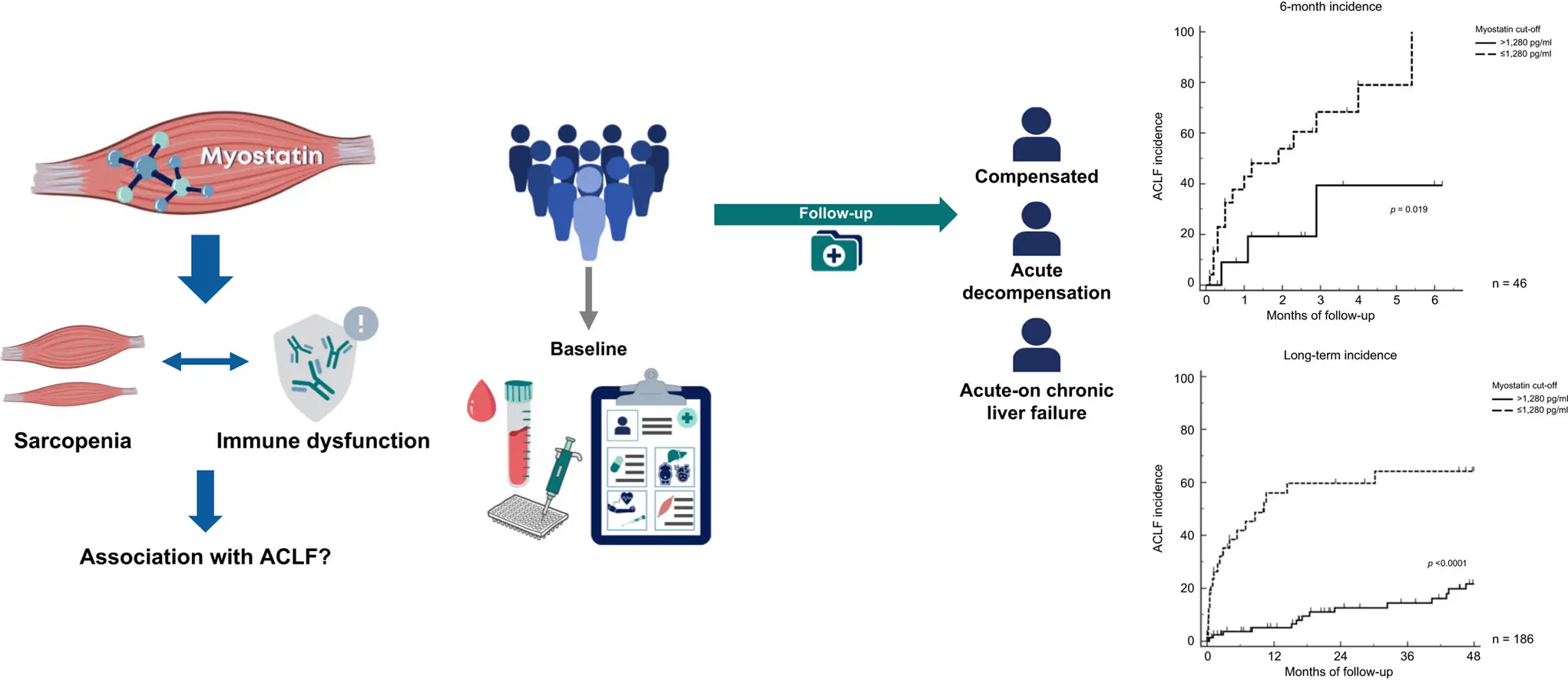Myostatin is associated with the presence and development of acute-on-chronic liver failure

Graphical Abstract
Highlights
Sarcopenia is associated with ACLF development and outcome.
Myostatin is a key myokine involved in the regulation of skeletal muscle.
Low myostatin levels are associated with the development of ACLF and decreased survival.
Abstract
Background & Aims Acute-on-chronic liver failure (ACLF) has been linked to different pathophysiological mechanisms, including systemic inflammation and mitochondrial dysfunction. Sarcopenia has also been proposed as a potential mechanism; myostatin is a key factor inducing sarcopenia. Therefore, this study aimed to evaluate the association of myostatin levels with the development of ACLF and mortality in patients with cirrhosis. Methods We performed a prospective cohort study, including both outpatient and hospitalized patients with cirrhosis. Clinical, biochemical, and nutritional parameters were evaluated, and the development of acute decompensation (AD) or ACLF during follow-up was recorded. ACLF was defined according to the EASL-CLIF criteria. Receiver-operating characteristic, Kaplan-Meier and Cox regression analyses were performed. Results A total of 186 patients with the whole spectrum of cirrhosis were included; mean age was 53.4 ± 14 years, mean Child-Pugh score was 8 ± 2.5 and mean MELD score was 15 ± 8. There was a stepwise decrease in myostatin levels from a compensated stage to AD and ACLF. Myostatin correlated positively with nutritional markers and negatively with severity scores. The prevalence of sarcopenia was 73.6%. During follow-up, 27.9% of patients developed AD and 25.8% developed ACLF. Most episodes were grade 2-3, mainly (62.5%) precipitated by infections. The most common organ failures observed were in the liver (63.3%) and the kidney (64.6%). Receiver-operating characteristic analysis yielded <1,280 pg/ml as the best serum myostatin cut-off for the prediction of ACLF. In Kaplan-Meier curves and multivariate analysis, myostatin levels remained independently associated with the incidence of ACLF and survival. Conclusions There is a progressive decrease in myostatin levels as cirrhosis progresses, demonstrating an association of sarcopenia with the development of ACLF and increased mortality. Impact and implications Myostatin is a muscle hormone, it is decreased in patients with muscle loss and is a marker of impaired muscle function. In this study we show that myostatin levels are decreased in patients with cirrhosis, with lower levels in patients with acute decompensation and acute-on chronic liver failure (ACLF). Low myostatin levels in cirrhosis predict the development of ACLF and mortality independently of liver disease severity and sex.
